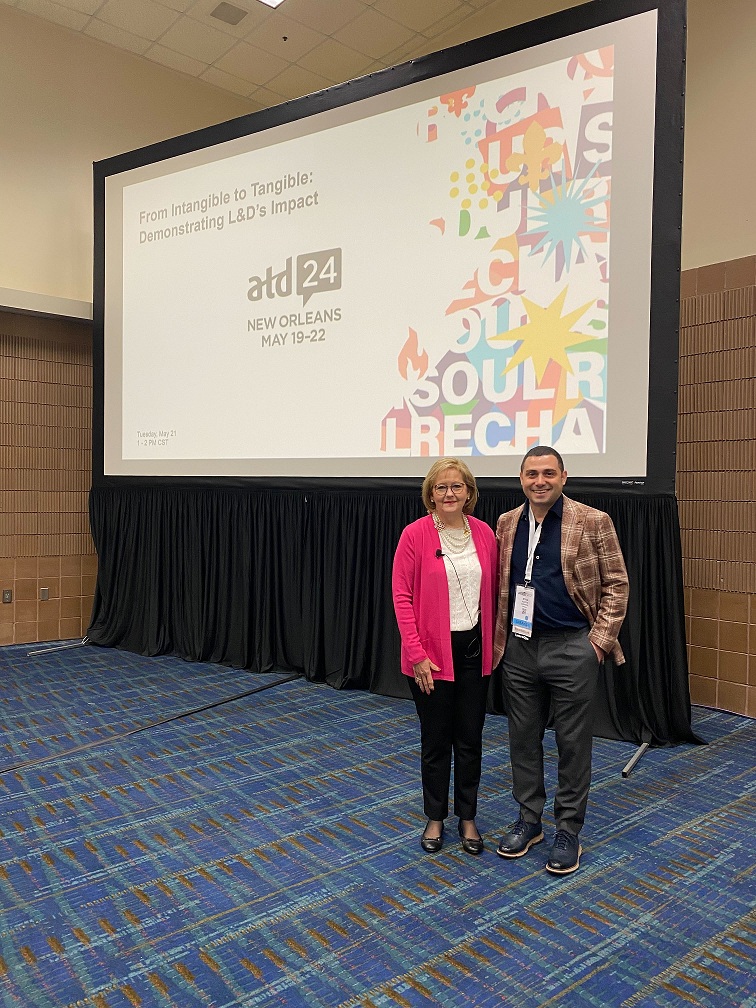The LearnOps Framework: A New Era in Learning Operations
The role of Learning & Development (L&D) teams is undergoing a radical transformation. No longer confined to the periphery as mere support functions, L&D teams are stepping into the spotlight as strategic powerhouses driving organizational growth. At the heart of this shift is Cognota’s groundbreaking LearnOps Framework—a revolutionary approach designed to streamline learning operations and elevate L&D to new heights.
Unlocking the Power of LearnOps
Imagine a world where your L&D initiatives are seamlessly aligned with your business goals, where every training request is managed with precision, and where the impact of your learning programs is not only visible but quantifiable. This is the world that Cognota’s LearnOps Framework makes possible. By integrating the latest technologies and best practices, the LearnOps Framework offers a structured, data-driven approach that transforms the way L&D teams operate.
Stage 1: Align – Setting the Foundation
The journey begins with alignment. The LearnOps Framework helps L&D teams set objectives that support the overarching corporate vision. This stage involves determining the optimal operating model—be it federated, centralized, or decentralized—to best meet these objectives. By fostering strong business partnerships and effectively managing stakeholder requests, the LearnOps Framework ensures that every learning initiative is strategically aligned with the company’s goals. This alignment lays a solid foundation, turning L&D into a strategic partner rather than a reactive service provider.
Stage 2: Plan – Crafting the Blueprint
With objectives set, it’s time to plan. This stage involves designing comprehensive learning programs that address specific business needs. The LearnOps Framework guides teams through the process of defining learning objectives, developing evaluation plans, and collaborating with project teams to create effective learning solutions. It also focuses on resource management, ensuring that the necessary capacity and budget are allocated to achieve desired outcomes. By meticulously planning every detail, L&D teams can craft a blueprint for success.
Stage 3: Deliver – Bringing Plans to Life
The LearnOps Framework provides tools to track project progress, manage content, and oversee facilitators, events, and activities. This ensures that learning experiences are not only delivered on time but are also tailored to meet diverse learner and business needs. By maintaining visibility and control over every aspect of the delivery process, L&D teams can ensure smooth operations and achieve measurable outcomes.
Stage 4: Measure – Assessing the Impact
Measuring the impact of learning programs is crucial. The LearnOps Framework equips L&D teams with robust evaluation tools to collect and analyze evidence from stakeholders. This stage focuses on assessing changes in business variables and crafting actionable recommendations. By measuring and communicating the effectiveness of learning programs, L&D teams can demonstrate their value and secure ongoing support from leadership.
Stage 5: Optimize – Continuous Improvement
The final stage of the LearnOps Framework is optimization. By benchmarking performance metrics against industry best practices, L&D teams can identify areas for improvement. The framework emphasizes the importance of capturing and analyzing key metrics to inform decision-making and drive continuous improvement. This relentless focus on optimization ensures that learning operations remain agile, effective, and aligned with evolving business needs.
Transforming L&D with Cognota
Cognota’s LearnOps Framework is more than just a methodology; it’s a game-changer for L&D teams. Providing a structured, strategic approach to learning operations empowers L&D professionals to move beyond traditional boundaries and make a tangible impact on their organizations. With Cognota’s innovative platform and the LearnOps Framework, L&D teams can achieve unprecedented levels of efficiency, effectiveness, and business alignment.







